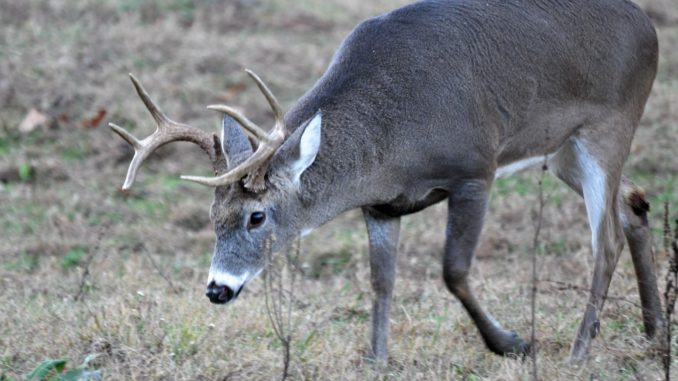
For a November experience that may result in a trophy buck, try a lodge hunt along the Roanoke River.
North Carolina deer hunters have three basic options for hunting during November’s rut: private land, public game lands and hunting lodges.
Which is more likely to produce the desired results? It comes down to access and hunting preferences. Many hunters hunt private land, whether their own or someone else’s, and all they need is written permission. For game lands, all that’s required is a basic statewide hunting license that includes game-land hunting privileges.
Two problems immediately come to mind when hunting private and public land: hunting pressure and a lack of the kind of quality bucks hunters are targeting. In deer-hunter terminology, an area may have been “shot out.” And in November, the woods and fields also have more hunters than normal wandering about or in stands because the big bucks that fill hunters’ dreams attract more nimrods than any other time of the year.
Why?
November is when bucks are on the move 24/7, looking for receptive does and are more likely to present a chance to fling an arrow or fire a bullet or load of buckshot in their direction.
And that leaves a third choice: private land owned by a hunting lodge. A great many of them are on big plantations along the Roanoke River, and Thornbury Plantation Lodge is a perfect example, as are several other local lodges, including Lily Pond Creek, Occoneechee and Verona Creek Plantation.
Located in Northampton County, Thornbury has been owned by the Burgwyn family since 1840. The owners, Steve and Bo Burgwyn, won’t guarantee guests that they’ll take home a trophy buck, but the chances are impressive, going by recent results.
According to the latest harvest statistics from the N.C. Wildlife Resources Commission, Northampton had the most deer and greatest number of bucks per square mile harvested of any of the state’s 100 counties. Not only that, but anecdotal evidence offered by a look at the top bucks of the last three years shows Northampton at the top of the list.
“November’s the best time to come up here,” said Tra Storey, who manages Thornbury, which covers 3,400 acres in one contiguous block and has five miles of frontage along the Roanoke River.
The rut is such a productive time that hunters have the lodge almost booked solid for the peak weeks of breeding season.
The rut, Storey said, varies from year to year at Thornbury, but mostly it occurs from late October through the first three weeks of November. And the rut in northeastern North Carolina isn’t dependent upon the weather.
“We found out the rut corresponds to moon phases,” Storey said. “I don’t know if it’s like that at other places, but it is here.”
Storey said the usual scenario is that the first frost occurs around the dark of the moon, so people believe it’s cold weather that triggers the rut. The past two seasons, the rut has exploded on the new moon. In 2009, the rut hit after the first frost in late October, just before Halloween, but it coincided with a cold snap. The peak of the rut hunting lasted until the full moon in November. In other years, the rut may crank up earlier if the new moon falls earlier in the month, before cold weather.
In 2010, Storey said, “The new moon happened the first week of November, and we wore them out. Twenty-eight days later, we had another dark moon and had good luck start up again.
“When the buck’s necks are swollen and their hocks are stinking, it’s rut time,” he said.
During the rut, Storey puts his hunters in stands in cutovers. The plantation also uses corn as bait in shooting lanes near the stands.
“We don’t hunt the woods,” he said. “If you go in the woods (to get to stands) or just stalk, all you’ll do is see deer crashing away.”
Storey’s theory is that bucks will chase does in cutover bedding areas and does coming to the corn. Being in a stand with a pair of binoculars gives a hunter a chance to see a buck, examine its rack, then decide whether or not to shoot. That’s almost impossible to do in the thick woods.
Storey also has food plots planted in corn, oaks and clover that attract does and bucks looking for does, plus baitpiles and corn feeders located near stands.
But it isn’t food that bucks are thinking about when the rut arrives. Between late October and Thanksgiving, Storey said bucks will drop 20 pounds in body weight. He estimated that a mature buck will weigh 170 to 200 pounds when the rut first arrives and 150 to 170 pounds when the breeding season ends.
However, Storey said a lot of rut hunting is just pure luck.
“Killing a good buck, I think, is 95-percent luck and 5-percent wind direction,” he said.
Many of the plantation’s stands are set up on the east sides of fields or cutovers and shooting lanes so prevailing west winds will blow toward hunters and not approaching deer. But stands also are placed at the north or south sides of fields and food plots.
“We always check the wind direction before we put a hunter on a stand,” Storey said. “But some hunters are just lucky.
“What happens here often is we’ll have a good week of muzzleloader hunting and a good week of rifle hunting, then the deer will disappear like you turned off a light switch,” Storey said. “Then we’ll wait three days, a new crowd (of hunters) will come in and may kill six or eight deer, then the next crowd will waylay ‘em.”
Covering relatively large tracts, plantation/lodge combinations can often manage deer better than hunters on small, private properties who may be surrounded by hunters or clubs that don’t share their goals.
Thornbury’s deer management was apparent when the plantation opened for hunters in 1997.
Like most such properties in Northampton County, when Storey and Burgwyn began their operation, the buck-to-doe ratio was out of kilter.
“The hunt club’s motto was ‘Kill a doe and get kicked out of the club, and kill any buck you wanted to,’ ” Storey said. “That’s how different things were back then.
They adopted Quality Deer Management strategies and began to have shoot-fests, with clients taking as many does as was legal, along with removing does from the herd themselves.
“But we joined DMAP (the N.C. Wildlife Resources Commission’s Deer Management Assistance Program) and were in it for years and used as many of the free doe tags as we could. We worked the devil out of that and have killed from 1,200 to 1,500 does.”
When they were managing according to DMAP guidelines, Storey said they had about a 40-to-1 doe-to-buck ratio. Now they’ve got more bucks than does.
“Now, we impose a $300 fine for anyone who kills a buck with less than a 14-inch wide spread,” he said.
That kind of rule would make you think they don’t kill many bucks, but nothing could be farther from the facts.
“We kill plenty of bucks, and they’re good deer with nice racks,” Storey said. “There’s basically two kinds of hunting here — one is that a good buck walks out in front of you and you check him out and shoot him and the other is to check them out with binoculars from a stand. If you have to ask yourself, ‘Is that deer big enough to shoot?’ you don’t shoot it. That makes it easy to control the buck harvest.”
Thornbury has storied history
Thornbury Plantation has been in existence for 180 years, but the original land grant from King George III of England totaled 18,000 acres.
Steve Burgwyn, one of the current owners, said. “The first plantation house was built by my great-great-great-great grandfather It’s name was the Burgwyn House, but it burned down.”
Steve Burgwyn came into possession of the land through marriage.
“His two sons, Henry King Burgwyn and Thomas Burgwyn, began clearing the land during the mid-1800s,” Steve Burgwyn said.
Henry King Burgwyn, one of Steve’s great-great-great uncles, won fame during the War Between the States as “The Boy Colonel,” leader of North Carolina’s 26th Regiment. He was killed during the battle of Gettysburg.
“One of Henry King’s brothers was my great-great grandfather,” Steve Burgywn said, “and that’s how we came to inherit this land.”
The plantation originally was one of the famed Occoneechee Neck Low Grounds plantations.
“The land wasn’t of much use to start with because it was in the low ground and the property got flooded every year by the Roanoke River,” he said.
The floods ended when the Roanoke River lakes — Kerr Lake in the mid-1950s and later Lake Gaston and Roanoke Rapids — were built. The U.S. Army Corps of Engineers helped by regulating water flow to end lowland flooding and help striped bass spawn, a cooperative project pushed by the N.C. Wildlife Resources Commission in the 1970s and 1980s.
“We were lucky,” Burgwyn said. “When the floods ended, we could plant crops at some of the richest flood-plain bottom land in the world.”
DESTINATION INFORMATION
HOW TO GET THERE —Northampton County is home to a handful of plantations that provide deer and turkey hunts in season. I-85 and US 158 are the main routes to access the county, which is along the northern banks of the Roanoke River. Occoneechee Neck Rd. leads off US 158 to Thornbury and several other plantations.
BEST TIMES TO GO — The peak of the rut is from the last week in October through the first two weeks of November, but good hunting often extends through Thanksgiving, depending on the arrival of the new and full moons.
EQUIPMENT — A centerfire rifle with a quality scope is required, as shots may be as long as 150 to 200 yards. A good set of binoculars is helpful, along with a grunt tube, doe-in-heat can call, rubber boots, bug spray, Thermocell or net covers. Some blaze orange clothing is required.
HUNTING OPERATIONS/INFORMATION — Thornbury Plantation Lodge, 1087 Occoneechee Neck South Rd., Jackson, NC 27845-9524, 252-578-0491 or www.huntthornbury.com. Other lodges in Northampton County include: Occonneechee Lodge, 252-583-1799, www.deerhuntnc.com; Lily Pond Creek Hunting Lodge, 252-534-7381 or www.lilypondcreek.com; Verona Creek Plantation, 252-534-7381. For information on Halifax County hunting (south side of Roanoke River), contact Halifax Convention & Visitors Bureau, 800-522-1282 or www.visithalifax.com. See also GUIDES & CHARTERS in Classifieds.
MAPS — Delorme N.C. Atlas & Gazeteer, 800-561-5105, www.delorme.com.

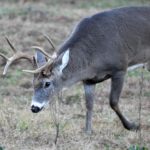
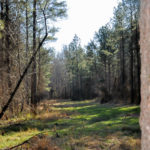
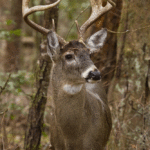
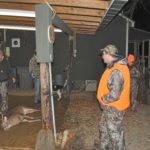
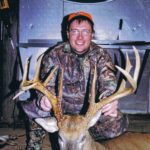
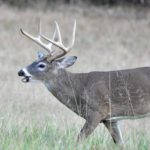
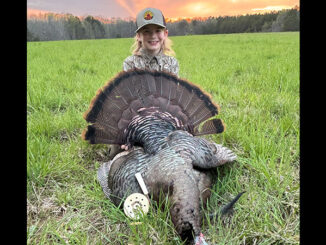



Be the first to comment